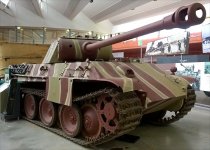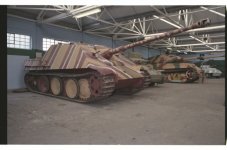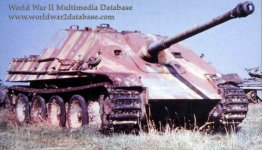Hunter Rose
Master Sergeant
- Joined
- Mar 8, 2010
- Messages
- 1,328
October 31 1944 OKH orderd that Dunkelgelb be replaced with Primer Oxide Red as the base coat for Panzers. OKH obviously considered Primer Oxide Red a Camouflage Color at this time. I consider OKH orders a more accurate source of information than modern speculation.
No, the Germans did not consider red oxide primer a camo color, they considered it a primer. As for the order, you are misinterpreting it. Primer did not replace dunkelgelb as a basecoat, the order just stated that an entire base coat of dunkelgelb was no longer to be sprayed over the primer and then the camo pattern added on top of the dunkelgelb coat. Because of this, some panzers left the factory with primer still showing through.
This order was later clarified to MNH by a Waffenamt Inspector, stating that a camo pattern of three camo colors was t be applied directly onto the primer. The three camo colors were as follows:
RAL 8017 Rotbraun
RAL 7028 Dunkelgelb
RAL 6003 Olivgrun
The Jentz & Doyle material linked by Hunter Rose did not reference any sources for the theories presented; nor any color samples. No cross references were provided regarding RAL Colors past or present. Without supporting evidence it is difficult to logically credit the accuracy of any theory.
Jentz based all his technical Panzer works/books SOLELY on primary source material. That was kind of his thing and why people regarded him as an expert on these things. If Jentz stated it in one of his books it's because he found documentation for it in from an original wartime order, drawing, or document.
But hey, let's ignore the guy who spent over 20 years digging through primary source archival data. Yeah, that makes sense.




